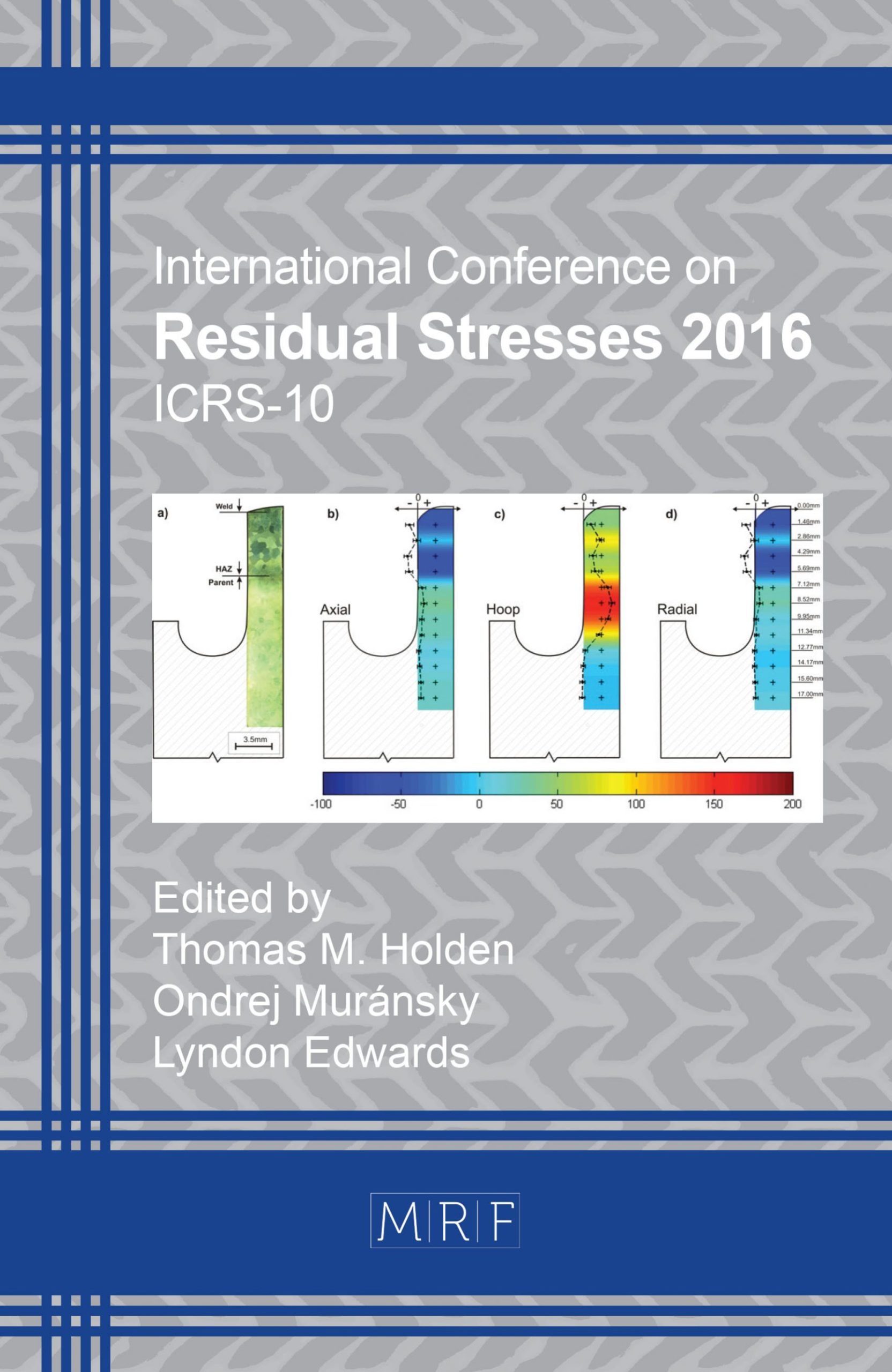Multi-axial Analyses of Welding Stresses in High-Strength Steel Welds
D. Schroepfer, K. Flohr, A. Kromm, T. Kannengiesser
download PDFAbstract. Today’s efforts for lightweight design result in a growing application of high-strength structural steels from 960 MPa. In welded structures of these steels increased demands regarding component safety and a high elastic ratio should be considered. Hence, the prevention of an evolution of high weld-induced tensile residual stresses is required. Recent studies showed that component related restraint conditions of welds are able to elevate welding induced stresses to critical values, depending on material characteristics, the welding process and parameters. This work involves multi-axial welding loads as a consequence of the superposition of local residual stresses, global reaction stresses and moments, varying the welding parameters under different restraint conditions. The global welding loads are measured via GMA-weld tests in a special testing facility and via a DIC(Digital Image Correlation)-system in a slot weld. Local transverse residual stresses were analysed by means of X-ray diffraction. The application of a less amount of weld runs due to a modified welding parameters and welds seam configurations revealed as a beneficial approach to reduce welding loads in high-strength steels.
Keywords
High-Strength Steel, Welding, Reaction Stress, X-Ray Diffraction
Published online 12/22/2016, 6 pages
Copyright © 2016 by the author(s)
Published under license by Materials Research Forum LLC., Millersville PA, USA
Citation: D. Schroepfer, K. Flohr, A. Kromm, T. Kannengiesser, ‘Multi-axial Analyses of Welding Stresses in High-Strength Steel Welds’, Materials Research Proceedings, Vol. 2, pp 205-210, 2017
DOI: http://dx.doi.org/10.21741/9781945291173-35
The article was published as article 35 of the book Residual Stresses 2016
![]() Content from this work may be used under the terms of the Creative Commons Attribution 3.0 licence. Any further distribution of this work must maintain attribution to the author(s) and the title of the work, journal citation and DOI.
Content from this work may be used under the terms of the Creative Commons Attribution 3.0 licence. Any further distribution of this work must maintain attribution to the author(s) and the title of the work, journal citation and DOI.
References
[1] H.-P. Guenther, ed., Use and Application of High-Performance Steels for Steel Structures, IABSE IVBH, Zürich, 2005.
[2] R. Rauch, S. Kapl, et al., High Strength Low Alloy Steel Weldments with Accommodated Qualities to the Base Metal, BHM Berg- und Hüttenm. Monatshefte. 157 (2012) 102–107. http://dx.doi.org/10.1007/s00501-012-0060-5
[3] J. Lu, Prestress Engineering of Structural Material: A Global Design Approach to the Residual Stress Problem, in: Handb. Residual Stress Deform. Steel, 2002: pp. 11–26.
[4] D. Schroepfer, A. Kromm, T. Kannengiesser, Improving Welding Stresses by Filler Metal and Heat Control Selection in Component-related Butt Joints of High-strength Steel, Weld. World. 59 (2015) 455–464. http://dx.doi.org/10.1007/s40194-014-0219-7
[5] D. Schroepfer, T. Kannengiesser, Stress Build-up in HSLA Steel Welds due to Material Behaviour, J. Mater. Process. Technol. 227 (2016) 49–58. http://dx.doi.org/10.1016/j.jmatprotec.2015.08.003
[6] M. Rhode, A. Kromm, T. Kannengiesser, Residual Stresses in Multi-Layer Component Welds, in: Trends Weld. Res. Proc. 9th Int. Conf., ASM International, ISBN: 1-62708-998-8, Chicago, Illinois, USA, 2012: pp. 48–54.
[7] T. Lausch, T. Kannengiesser, M. Schmitz-Niederau, Multi-Axial Load Analysis of Thick-Walled Component Welds made of 13CrMoV9-10, J. Mater. Process. Technol. 213 (2013) 1234–1240. http://dx.doi.org/10.1016/j.jmatprotec.2013.01.008
[8] T. Nitschke-Pagel, H. Wohlfahrt, The Generation of Residual Stresses due to Joining Processes, in: V. Hauk, H. Hougardy, E. Macherauch (Eds.), Residual Stress. – Meas. Calc. Eval., DGM Informationsgesellschaft mbH, ISBN: 3-88355-169-4, 1991: pp. 121–133.
[9] J. Chen, C. Schwenk, et al., Predicting the Influence of Groove Angle on Heat Transfer and Fluid Flow for New Gas Metal Arc Welding Processes, Int. J. Heat Mass Transf. 55 (2011) 102–111.
[10] EN ISO 16834: Welding consumables – Wire electrodes, wires, rods and deposits for gas shielded arc welding of high strength steels – Classification, 2012.
[11] EN 10025-6: Hot rolled products of structural steels – Pt. 6: Technical delivery conditions for flat products of high yield strength structural steels in the quenched and tempered conditions, 2011.
[12] K. Satoh, Y. Ueda, S. Matsui, M. Natsume, T. Terasaki, K. Fukuda, M. Tsuji, Japanese Studies on Structural Restraint Severity in Relation to Weld Cracking, Weld. World. 15 (1977) 155–189.
[13] K. Masubuchi, Analysis of Welded Structures: Residual Stresses, Distortion, and their Consequences, Pergamon Press, 1980.
[14] K. Satoh, S. Matsui, Effect of Intensity of Bending Restraint on Weldcracking in Multipass Weld, Trans. Japan Weld. Soc. 8 (1977) 42–49. Japan Welding Society, 1977.































